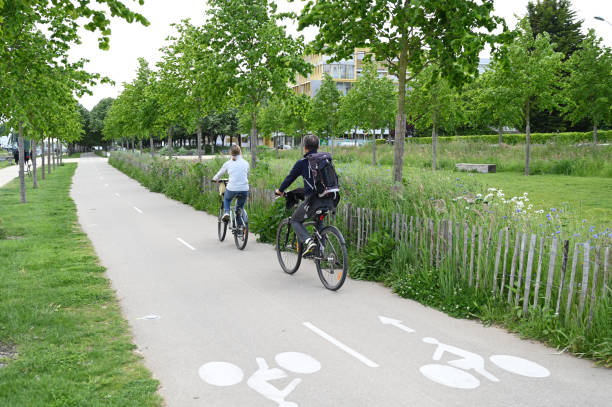In the modern world, where speed and convenience are paramount, seamless travel has become the ultimate goal for both passengers and transportation providers. The concept of seamless travel revolves around the idea of integrating different modes of transportation – such as buses, trains, and bikes – to create a travel experience that is not only efficient but also enjoyable.
Discover : Paris in Every Season : Weather, Events, and Transportation Tips
The journey begins : Interconnected networks
Multimodal transportation seamlessly combines diverse travel methods – buses, trains, bikes, and more – into a unified system. It streamlines schedules, ticketing, and information to empower passengers in planning and executing their journeys effortlessly. Consider a commuter who starts on a bus, transfers to a train, and ends their trip with a shared bike or scooter. This synergy curbs congestion, cuts emissions, and elevates passenger convenience, rendering it an eco-friendly and efficient solution. Multimodal transport embodies the idea that the whole journey can exceed the sum of its parts.
Initiatives worldwide are realizing this vision by integrating transportation networks, like buses, trains, trams, subways, and bike-sharing systems, reducing mode-switching hassles and ensuring smoother transitions between journey segments.
The advantages of multimodal transport
As we delve into the multifaceted world of multimodal transport, it becomes clear that this innovative approach to travel offers a plethora of advantages.
Reducing congestion and environmental impact
One of the key advantages of multimodal transportation is its ability to alleviate traffic congestion and reduce the environmental impact of travel. By encouraging passengers to use public transportation, ride-sharing, or bicycles, cities can decrease the number of private vehicles on the road. This not only leads to less traffic but also lowers carbon emissions, making it a win-win solution for both passengers and the planet.
Efficiency and convenience
Imagine a scenario where a passenger can seamlessly switch from a bus to a train and then to a bike without needing to purchase separate tickets or navigate complex schedules. This level of efficiency and convenience is a hallmark of seamless travel. Apps and platforms that provide real-time information on transportation options, schedules, and ticketing make it easier for passengers to plan their journeys and make informed choices.
Promoting healthy lifestyles
Multimodal transportation not only benefits the environment but also promotes healthy lifestyles. Biking or walking to a transportation hub, such as a train station, can become a regular part of one’s daily routine. This not only encourages physical activity but also reduces stress, as passengers are not stuck in traffic or dealing with the challenges of parking.
Empowering passengers with choices
Seamless travel empowers passengers by providing them with a multitude of options. Depending on their preferences, needs, and schedules, passengers can mix and match modes of transportation to create a tailor-made journey. For instance, someone might take a bus to a train station, ride a bike to their workplace, and then use a ride-sharing service for the final leg of their commute. This level of flexibility puts passengers in control of their travel experience.
Economic benefits
The economic benefits of seamless travel are significant. It can stimulate local economies by encouraging the use of public transportation and reducing the need for personal vehicles. Moreover, efficient transportation networks can attract businesses and tourism, further boosting the local economy. As passengers spend less time stuck in traffic, they have more time and energy to engage in economic activities.
Challenges and solutions
While the idea of seamless travel is enticing, there are challenges to overcome. Infrastructure development, technology integration, and coordination among different transportation providers can be complex and costly. However, these challenges can be addressed through strategic planning, public-private partnerships, and government initiatives.
The future of seamless travel
The future of transportation is undoubtedly multimodal. As technology continues to advance, seamless travel will become even more accessible and efficient. Autonomous vehicles, for example, could play a significant role in the seamless travel experience, offering passengers an additional choice in their transportation options.
Furthermore, the integration of smart city technologies and data analytics will allow transportation providers to better predict passenger demand, optimize routes, and improve overall service quality.
Discover also : Day Trips from Paris : Exploring the Surrounding Regions
In conclusion…
Seamless travel through multimodal transportation is not just a concept; it’s a solution that has the power to transform how we move in our cities and beyond. By connecting various modes of transportation and empowering passengers with choices, it enhances the overall passenger experience. Moreover, it addresses critical issues such as traffic congestion, environmental sustainability, and public health.
As we move forward into a world where travel is more interconnected and efficient than ever before, the journey itself becomes part of the destination, offering passengers a glimpse into a brighter, more sustainable future. Embracing seamless travel is not just a matter of convenience; it’s a step towards a more sustainable, healthier, and economically vibrant future for all.

